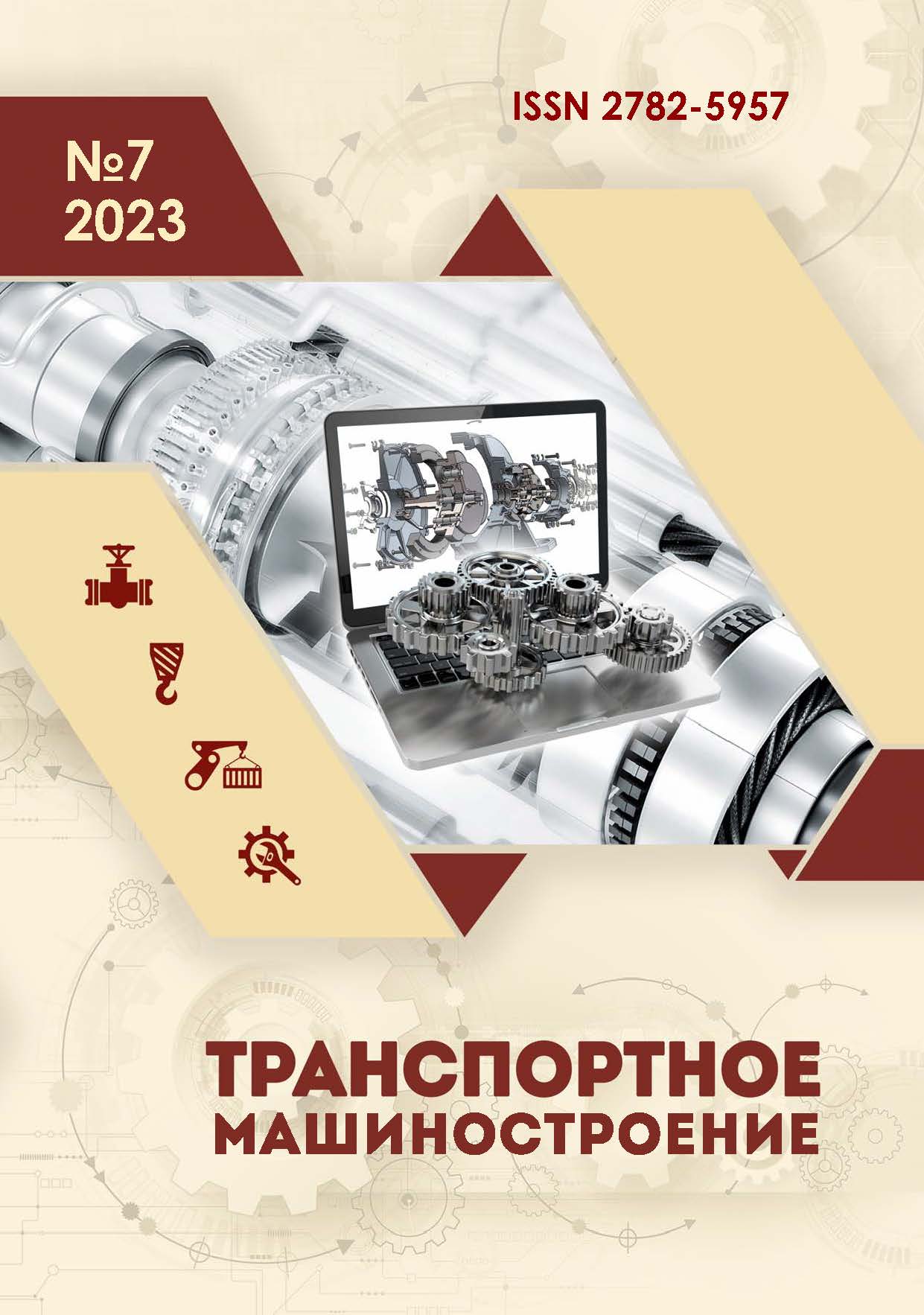Moscow, Moscow, Russian Federation
Moscow, Moscow, Russian Federation
UDC 629.463.32
Russian Library and Bibliographic Classification 392
The study objective is to determine the effect of residual deformations on the behavior of the boiler during operation. Tasks: to develop a creep model based on flow theory and a methodology for calculating creep deformations of a railway tank boiler that occur during long-term operation. The methods of elasticity and creep theory, finite element method are used. The novelty of the work is in the development of a methodology for determining residual deformations in the boiler of a tank car. The results of the study are the dependences of the value of residual deformations on various factors, the deformation of the boiler in the support zones, the selection of parameters of the creep model. Conclusions: in the study, the creep state equation is modeled, on which basis calculations of various technical solutions for reducing residual deformations in the boiler are carried out. The options are compared.
boiler, tank, method, elements, creep, state, theory, flow, deformation
1. Gerasimov KV. Loading of the gondola car body when a block of cargo falls [abstract of dissertation]. [Moscow (RF)]; Bryansk State Technical University; 2017.
2. Maslov IG. The condition of the tank boiler when exposed to a flame in an emergency situation [abstract of dissertation]. [Moscow (RF)]; Moscow State University of Railway Engineering; 2016.
3. Shishkin DM. Methods of calculating residual stresses in surface-hardened prismatic parts with stress concentrators under rheological deformation [abstract of dissertation]. [Samara (RF)]; Samara State Technical University; 2021.
4. Arkhipov AV, Smolyaninov AV. Stress concentration in the zone of geometric deviations of the tank boiler. Transport of the Urals. 2007;1(12):53-64.
5. Maze J. Theory and problems of mechanics of solid media. Moscow: LKI Publishing House; 2007.
6. Zoteev VE, Makarov RYu. Numerical method for determining the parameters of the creep model within the first two stages. Vestnik of samara university. Aerospace and mechanical engineering. 2017;16(2):145-156.
7. Radchenko VP, Saushkin MN. Phenomenological method for calculating residual stresses and plastic deformations in a hollow surface-hardened cylindrical sample. The Journal of Applied Mathematics and Mechanics. 2013;1(45):168-177.
8. Rychkov SP. Modeling of structures in Femap environment with NX Nastran. Moscow: DMK Press; 2013.
9. Bathe K-J, Wilson EL. Numerical methods in finite element analysis. NJ: Prentice Hall; 1976.
10. Bathe K-J. Finite element procedures. 2nd ed. NJ: Prentice Hall; 2014.
11. Norrie DH, de Vries G. An introduction to finite element analysis. New York: Academic Press; 1978.
12. Zienkiwicz OC, Cheung Y. The finite element method in structural and countinium mechanics. New-York: McGraw-Hill Book Company; 1967.
13. Zienkiewicz OC, Morgan K. Finite elements and approximation. New York: Wiley; 1983.
14. Kozlov MP. Determination of stresses in the shells of cylindrical parts of tank boilers. Transport of the Urals. 2009;3(22):71 - 76.
15. Hoger A. On the determination of residual stress in an elastic body. Journal of Elasticity. 1998;16:303-324.
16. Emelyanov IG, Mironov VI, Yakushev AV, Kuznetsov AV. Contact interaction of the boiler of a tank car with leaning supports. Proceedings of the Samara Scientific Center of the Russian Academy of Sciences. 2011. Vol. 13, No. 1(2). pp. 436-439.
17. Kim SH, Kim CH, Oh H. [et al.] Residual stresses and viscoe-lastic deformation of an injection molded automotive part. Korea-Australia rheology journal. 2007;19(4).183-190.
18. GOST 5520-79. Rolled sheet of carbon, low-alloy and alloy steel for boilers and vessels operating under pressure : technical conditions. M. : Publishing House of Standards, 2003. 15 p.






